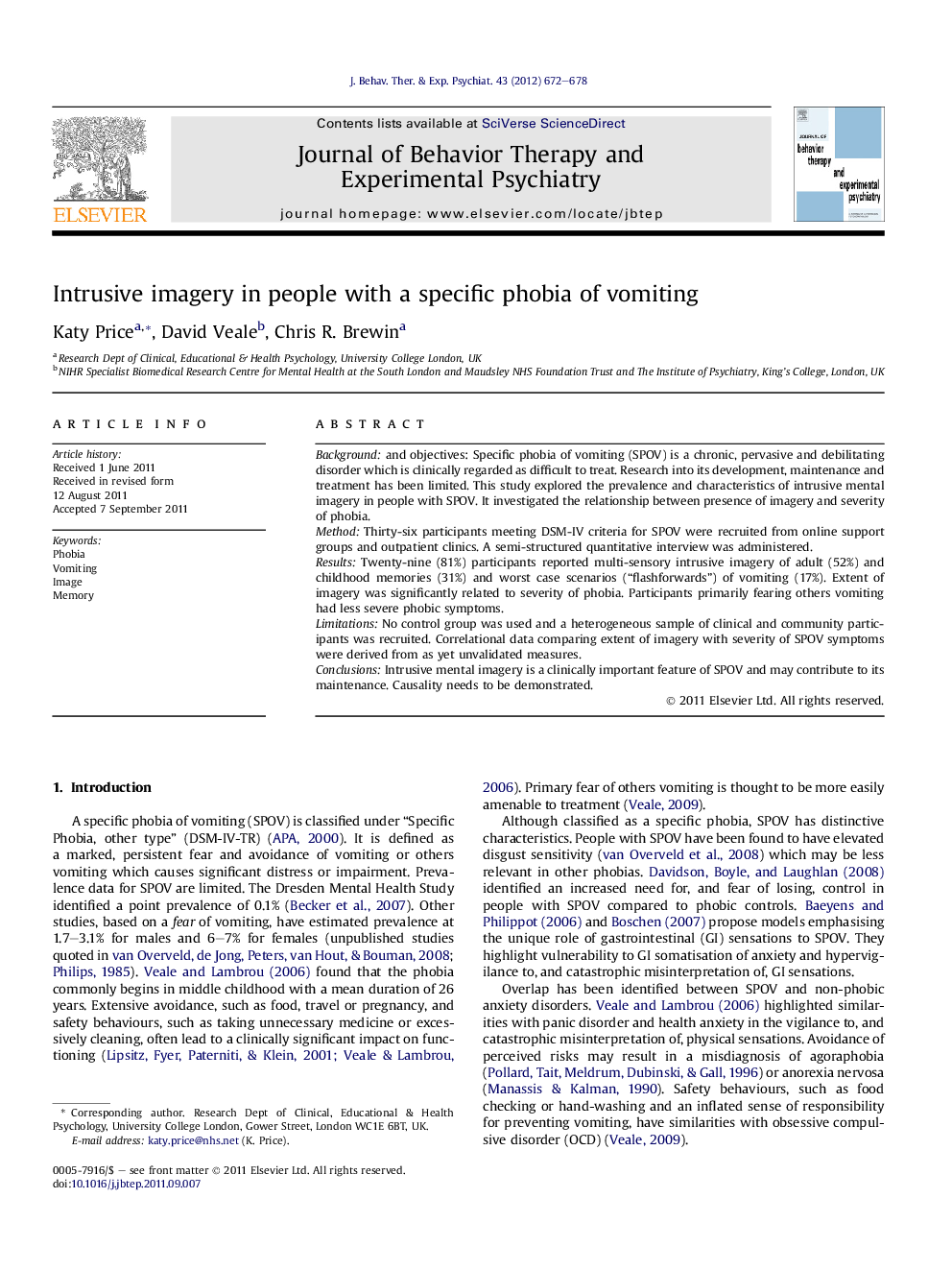| Article ID | Journal | Published Year | Pages | File Type |
|---|---|---|---|---|
| 910498 | Journal of Behavior Therapy and Experimental Psychiatry | 2012 | 7 Pages |
Backgroundand objectives: Specific phobia of vomiting (SPOV) is a chronic, pervasive and debilitating disorder which is clinically regarded as difficult to treat. Research into its development, maintenance and treatment has been limited. This study explored the prevalence and characteristics of intrusive mental imagery in people with SPOV. It investigated the relationship between presence of imagery and severity of phobia.MethodThirty-six participants meeting DSM-IV criteria for SPOV were recruited from online support groups and outpatient clinics. A semi-structured quantitative interview was administered.ResultsTwenty-nine (81%) participants reported multi-sensory intrusive imagery of adult (52%) and childhood memories (31%) and worst case scenarios (“flashforwards”) of vomiting (17%). Extent of imagery was significantly related to severity of phobia. Participants primarily fearing others vomiting had less severe phobic symptoms.LimitationsNo control group was used and a heterogeneous sample of clinical and community participants was recruited. Correlational data comparing extent of imagery with severity of SPOV symptoms were derived from as yet unvalidated measures.ConclusionsIntrusive mental imagery is a clinically important feature of SPOV and may contribute to its maintenance. Causality needs to be demonstrated.
► We investigate intrusive imagery in people with a specific phobia of vomiting. ► A majority of participants experience imagery, both memories and worst case scenarios. ► Extent of imagery experienced is significantly correlated with severity of phobia symptoms. ► Participants fearing themselves vomiting have more severe symptoms than those fearing others.
